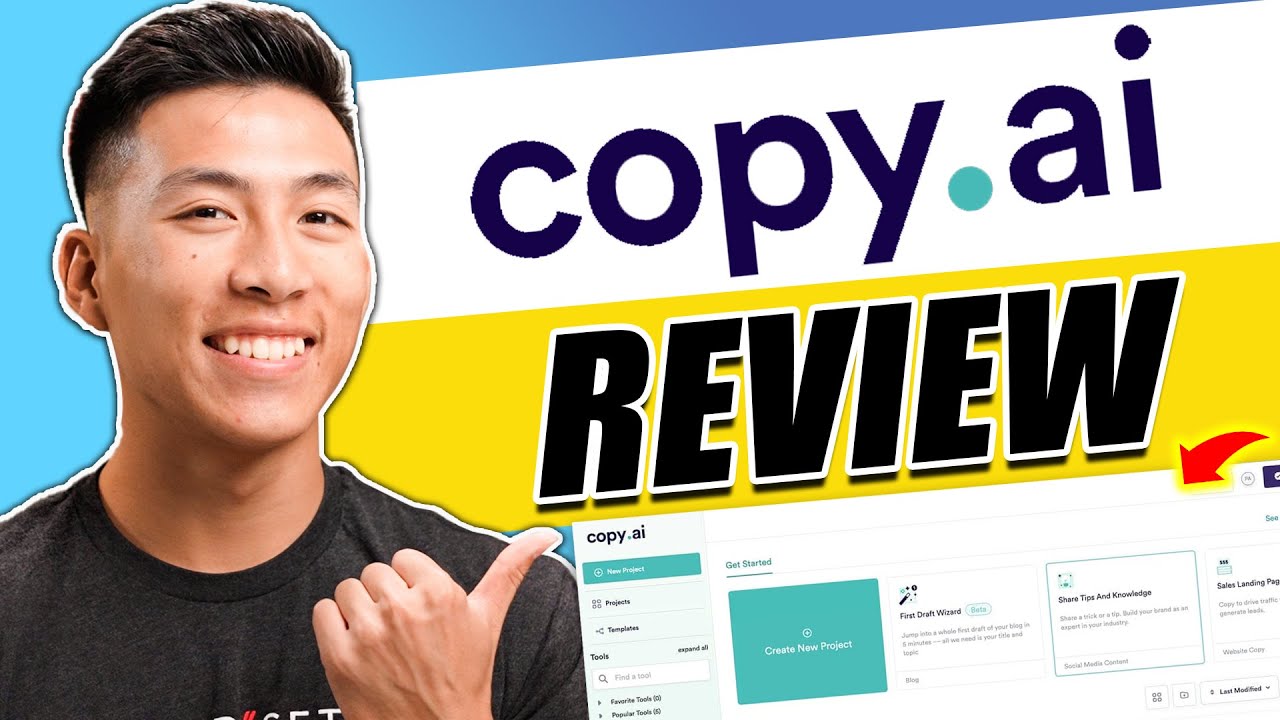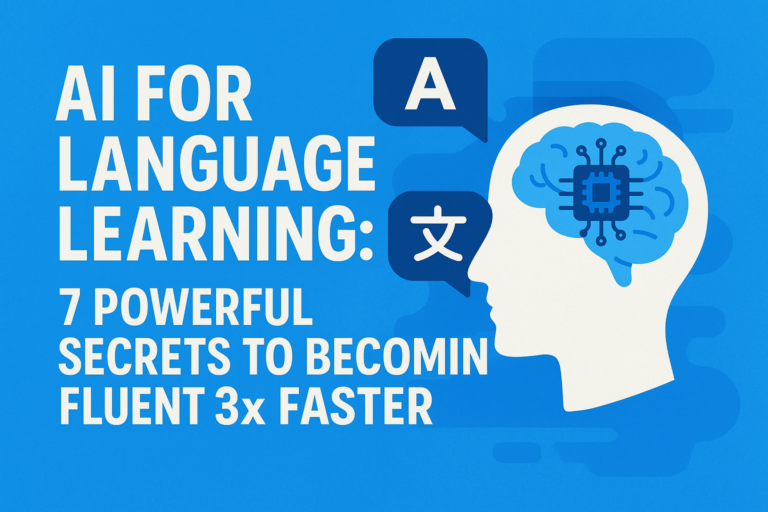As AI continues to reshape the business landscape, many entrepreneurs and marketers find themselves at a crossroads: how to effectively integrate AI into their strategies without feeling overwhelmed? This article will guide you through the essential tools and strategies that can help you not only get started with AI but also leverage it to enhance your business growth.The future is now, and AI is at the forefront. But jumping in can feel overwhelming – where to start? What tools to invest in?
This uncertainty is precisely what strategic business leaders and marketing managers face in today’s rapidly evolving landscape. Reports indicate a significant shift; nearly 64% of marketers expect AI to have a significant impact on their industry within the next few years [Statista, 2023]. Despite this widespread expectation and the potential for transformation, many business owners find themselves stuck at the first step. Getting started with AI without feeling lost amidst technical jargon or spending excessively before seeing results?
This article presents a clear path, designed specifically for you. We’ll outline a robust strategic toolkit combining foundational understanding, practical AI solutions, and human insight. We’ll demonstrate the tangible time and resource savings, provide a step-by-step blueprint for implementation, and discuss measurable success criteria. Furthermore, we’ll explore ways to scale your AI initiatives and offer real-world applications relevant to your business type.
The Strategic Toolkit: Your AI Foundation for Growth
Getting Started with AI requires more than just installing software. Building a strategic toolkit involves assembling the necessary skills, resources, and technologies. Think of it as a well-equipped strategy office:
- Strategic Foundation: Understanding Your Audience and Goals:
Before selecting any AI tool, it’s vital to define your core objectives. Why are you seeking AI assistance? Are you looking to improve customer service, streamline marketing content, drive sales, or enhance data analysis? Your goals must be connected to your overall business strategy.- Action: Clearly articulate your business goals and target audience. Identify specific problems you want AI to solve. [Aligning AI with Core Business Objectives].
- Tool: Is your target audience generating enough leads? [Tooltip]? No, but tools like Craftaico offer insights into your operations that map directly back to your definition of success.
Essential AI Tools to Getting Started with AI
Below are three practical AI tools tailored for specific needs like content creation, marketing campaigns, and visual designs, presented clearly and precisely that will help you Getting Started with AI:
AI-Powered Content & Copy Creation: Jasper
One of the most common bottlenecks in marketing is content generation. AI tools like Jasper leverage sophisticated language models to generate high-quality blog posts, ad copy, email subject lines, and social media updates based on your input.- How it Works: Provide Jasper with a prompt (e.g., “Write compelling ad copy for a new eco-friendly cleaning product targeting young families”), choose the tone/genre, and let the AI help generate options.
- Keywords: Learn AI basics becomes easier when tools like Jasper are part of your strategy.
- Link: https://www.jasper.ai
AI-Powered Marketing & Promotion: Copy.ai
Similar to Jasper, Copy.ai focuses on marketing copy. It’s excellent for marketing emails, landing page headlines, social media posts, and outreach messages, helping you refine your [Getting started with AI] marketing message faster and more effectively. It often provides copy suggestions and helps refine tone.- How it Works: Input your goal (e.g., “Write an Instagram caption for our annual sale”), and Copy.ai offers variations along with tone adjustments.
- Link: https://www.copy.ai
AI-Powered Content Generation: Midjourney
Sometimes AI’s value lies in visual creation. Midjourney uses AI to generate unique images, illustrations, and digital art based on text descriptions (prompts). This is invaluable for creating eye-catching graphics for social media, presentations, or marketing materials without traditional art resources.- How it Works: Describe, in detail, what you want to see. Midjourney interprets the prompt and generates an image, allowing for refinement and variation.
- Primary Use Case: Brand visuals, infographics, unique social media visuals.
- Link: https://www.midjourney.com
Jasper AI
Copy.ai
Midjourney AI
The Human Element: Guiding the AI
Crucially, these powerful tools only function as effective extensions of your team. The “Human Expertise” piece involves knowing what prompts to give the AI, why certain outputs are relevant, and how to refine and finalize the AI-generated results for your specific strategic goals. Your industry knowledge, brand voice, and strategic direction are irreplaceable supplements to AI capabilities.
Time & Resource Investment: Making AI Pay Off
Often the biggest concern for busy professionals is the return on their investment – of both time and money. Let’s break down a typical scenario:
- The Manual Method: Creating blog content for a medium-sized B2B SaaS company requires research, outlining, drafting, copyediting, proofreading, and formatting. A single content creator might spend anywhere from 30-60+ hours on this process, depending on complexity. Costs might also include graphic design or copywriting support if needed.
- The AI-Powered Method: Using a tool like Jasper, the same content creation task could be significantly accelerated.
- Research: AI can summarize articles or suggest keywords (tools like Ahrefs + Jasper assistants).
- Outlining: Jasper can help brainstorm and structure based on the research.
- Drafting: AI can generate the bulk of the copy quickly (perhaps within minutes).
- Editing: This is the critical human step. You review, refine the tone, correct inaccuracies, and ensure brand agreement.
- Formatting: Manual task.
- Estimated Time Saved: Let’s assume the AI drastically cuts the drafting and initial outlining time. If the manual estimate is 50 hours and AI+editing typically takes 10-15 hours, that’s a potential saving of 35-40 hours, representing roughly 70-77.5% time savings for this single task.
- What about ongoing tasks like SEO optimization or A/B testing copy variations? AI takes over more work, freeing your team.
When you integrate AI strategically, the investment in time, tools, and personnel becomes faster ROI – enabling more focus on high-value strategic activities and core business building.
The Implementation Blueprint of Getting Started with AI
Ready to move beyond ideation and build something tangible? Here’s a straightforward, easy-to-follow implementation path:
1. Define Your AI Pillar Goal:
- Assemble your small team (perhaps involving marketing, product, and leadership).
- Brainstorm potential AI application areas. Be realistic – start manageable.
- Example options: Generate blog post ideas & outlines, create landing page variations for [Getting started with AI] campaigns
- Align one or two ideas with your immediate business needs and customer journey.
2. Set Up Your Data Foundation:
- Export Your Data: Identify the relevant data sources you need for your chosen AI application. Is it customer data, market research, blog archives, or competitor analysis?
- Example: For blog post generation, export or take notes from existing successful blog posts. For chatbot customer support, export FAQs from your support knowledge base. Ensure data is clean and structured where possible (e.g., CSV files).
- Tip: Prioritize well-structured data with clear labels for easy AI ingestion.
3. Select & Configure Your Tool(s):
- Action: Review the tools discussed (Jasper, Copy.ai, Midjourney etc.) based on your chosen goal. Choose the best fit or a combination.
- For instance: You need to speed up blog creation for your [Getting started with AI] thought leadership campaign. You choose Jasper.
- Pro-Tip: Don’t start with the most complex, expensive tool. Begin with a simple, focused tooling strategy. Read through tutorials and the sample outputs available on the tool’s homepage carefully. Sign up for a free trial or limited free tier if offered. Our guide on how to effectively use AI assistants for content creation can be a valuable supplement during this phase [How to Use AI Assistants for Content Creation]. Familiarize yourself with the basic prompting techniques. Always start simple with prompts – don’t try to give the AI a complex, complete task all at once.
4. Integrate with Your Workflow:
- Manually import your exported data (from Step 2).
- Draft initial content using the AI tool’s interface following best practices for generating prompts.
- Refine and human-edit the AI outputs – check for brand voice alignment, factual accuracy, engaging tone, and strategy fitness. Add strategic H2’s or context if necessary. This is not deleting AI and writing manually, but leveraging AI to significantly accelerate the output and then meticulous human review.
This step-by-step guide provides a repeatable process applicable whether you’re drafting a [Getting started with AI] newsletter, optimizing landing pages, or crafting visuals like [Midjourney logo designs].
Measuring Success: KPIs & ROI
Now that you have an AI strategy in action, you need metrics. Here are key business KPIs to track (not just technical AI metrics):
| Metric | What It Tells You | Measurement Tools Track |
|---|---|---|
| Increase in Lead Generation Rate | How effectively your AI-driven content/content sources are attracting potential customers? | CRM, Analytics platforms, Landing page tools |
| Shortened Sales Cycle Length | Are AI-powered insights or personalized communication speeding up conversions from interest to purchase? | CRM, Sales reports |
| Enhanced Website/Ad Conversion Rate | Is AI-matched content or targeted campaigns better prompting users to take the desired action (e.g., Trial, Sale)? | Google Analytics, Ad platform reports |
| Reduction in Downtime/Operational Costs | Is automation handling repetitive tasks efficiently, freeing internal resources and minimizing errors? | Project management tools, Invoice review frequency |
| Customer Satisfaction Score (CSAT/NPS) | Are customers receiving a better experience due to AI-powered personalization or support speed? | Surveys, Support Ticket Resolution Rate, Social Media Monitoring |
Focus on KPIs directly tied to your core business goals, like [Getting started with AI] tool usage.
Scaling & Advanced Strategies
Once your initial AI application proves successful, don’t stop. Consider these scaling paths:
- Hyper-Personalization: Use AI Analytics tools (like generative AI running on your CRM data) to deliver highly tailored content or offers based on individual customer behavior, history, and intent.
- Predictive Analytics Integration: Combine AI with advanced CRM/Analytics platforms to predict upsell/cross-sell opportunities or identify churn risk proactively.
- Intelligent Workflow Automation: Go beyond basic triggers. Implement AI-powered chatbots on your website to qualify leads instantly, or use AI tools to semi-automatically categorize and tag incoming customer support requests.
Strategic Business Applications (Examples)
How does a generic AI strategy translate to different business types?
- B2B SaaS Leaders: Craft AI-generated white papers, case studies, and personalized email outreach campaigns highlighting the ROI of your specific AI-powered product.
- E-commerce Players: Use AI for [Getting started with AI] product descriptions tailored to customer search queries, generate style recommendations (upsells), or create dynamic, personalized homepage displays.
- Digital Agencies: Embed AI into your intake process to generate initial campaign concepts for your clients, offering unique, idea-rich starting points for [Getting started with AI] engagement strategies.
Remember, [Tooltip] is built by Craftaico professionals with this exact type of strategic thinking in mind – connecting AI to tangible results for business leaders.
Common Strategic Pitfalls to Avoid
Getting started with AI is exciting, but mistakes can set you back. Watch out for these:
- Treating AI as a Strategy Replacement: Forgetting crucial human input, especially regarding decision-making, brand voice, and strategic goals. AI is a tool, not your head.
- Bottoms-Up Adoption: Trying to implement AI without leadership buy-in or company-wide strategy. IT teams need support, clear strategy (starting with data), and budget. [Getting the leadership buy-in for AI initiatives is critical for success].
- Ignoring Data Privacy & Security: Selecting and implementing AI tools without considering compliance is risky. Choose tools offering robust privacy controls.
- Expecting AI to Be Magic: AI requires training, strategic input, and ongoing management. Don’t expect instant, perfect results for complex problems without human oversight.
Building Your Content Engine: Systems & Automation
The initial implementation is just the start. To build sustainable growth, treat your AI strategy as part of a larger engine:
- Feedback Loops: Analyze the KPIs discussed earlier. What works? What needs tweaking? Train the system based on successful outputs. Perfect = AI generating optimally based on your best human content.
- Continuous Iteration: AI technology is constantly evolving. Experiment with new tools and applications. Stay informed about industry trends.
- Flywheel Effect: Imagine your AI-powered content marketing generating more leads, which allows for reinvestment in more AI tools. [Developing custom marketing content using AI involves ongoing iteration, Keep learning and refining your prompt engineering skills].
Conclusion
Getting Started with AI offers concrete advantages for astute business owners and marketing managers navigating today’s competitive market. The key to success is not choosing the right Getting started with AI tool, but creating a well-defined plan incorporating strategic thinking, focused AI implementation, human guidance, measurable results, and a path toward expansion.
Before we wrap up, we invite you to share your Getting started with AI questions, concerns, or challenges in the comments.
Ready to turn your Getting started with AI vision into reality? We design AI-driven marketing solutions for leaders like you.
Schedule your FREE initial strategy session now: Schedule a Call
Frequently Asked Questions (FAQs)
Q: I’m not tech-savvy. Can I really implement these AI tools myself?
- A: Absolutely! Many AI tools are designed specifically for non-technical users. Tools like Jasper and Copy.ai feature intuitive interfaces and templates. While you’ll need to learn the basics of strategic prompt crafting (which is more about creativity than complex tech), setting them up and using their basic functionalities is manageable. Focus on defining your input and refining the output – tasks well within your skillset as a business owner or marketing manager. We often use these tools effectively even in smaller agencies.
Q: How much does AI cost? Is it worth the investment?
- A: Cost varies significantly. Some tools offer generous free tiers, while others use subscription or pay-as-you-go models based on usage or AI complexity. While there’s an upfront investment (software costs, potentially more time initially until mastery), Nthe ROI often comes from the savings in time and resources. AI can accelerate content campaigns, improve customer interactions, and scale operations more efficiently than manual tasks alone.
Q: Where should a small business owner start with AI?
- A: Start focused. Identify one area that matters most to your growth – likely content creation, lead generation, or customer interaction. Pick a simple, high-leverage tool (like Jasper for blog outlines, or Jasper for email campaigns). Dip your toes in, analyze the results, and build from there. Don’t try to buy everything at once. No larger company utilizes these tools well at first; everyone starts somewhere.
Focus on learning from success and failure, and grow your Getting started with AI initiative gradually over time.







